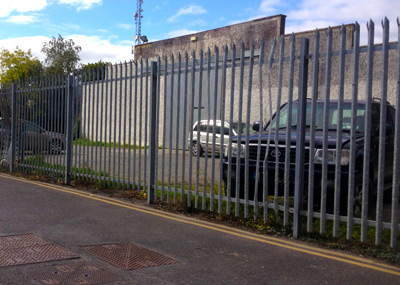The 1918 influenza pandemic (or Spanish Flu as it is more often referred) was without doubt the deadliest pandemic of the 20th century. It was caused by an H1N1 virus probably arriving from North American domestic and wild birds, and not from the mixing of human and swine viruses, although it should be noted there is no universal definite consensus, regarding where the virus actually originated.
It has been estimated that some 500 million people or one-third of the world’s then population became infected, resulting in an estimated death toll of at least 50 million persons worldwide, with about 675,000 deaths occurring in the United States alone.
Here in Thurles between 1918 and 1919 daily funerals were a regular spectacle travelling up Church Lane, east of the town, with as many as 9 interments per day recorded.

Sometimes coffins belonging to the poor would be left inside the graveyard gate for labourers; the frontline workers of back then, who undertook to bury same, returning, as they did after their days work had finished between the hours of 6:00pm and 7:30pm.
Coffins were being made on the site of what was later to became known as Casey’s Coal yard, situated on Kavanagh Place on the south side of Thurles town.
Back then, there were no vaccines to protect against influenza infection and no antibiotics to treat secondary associated bacterial infections. Control efforts worldwide were limited to non-pharmaceutical interventions. Yes you have guessed it; just like our endeavours in protecting ourselves against Covid-19 virus today; back then isolation, quarantine, the practise of good personal hygiene, the use of disinfectant and limit public gatherings was encouraged.
Tonight, according to the Centre for Systems Science and Engineering (CSSE) at Johns Hopkins University (JHU) there are almost 28 million cases of Covid-19 virus confirmed around the world with reported deaths of almost 906 thousand people, due solely to this current pandemic.
During the influenza pandemic of 1918, people called face coverings “Chin Sails“; “Flu Fences” and “Cheesecloth Muzzles“.
The priests leading the funeral processions up Church Lane in Thurles are recorded as wearing white linen across their tall top hats. After the burials it was supposedly the then custom for to give this linen to an under privileged person attending, supposedly to make a small item of clothing for a child.
While I can find no real evidence to support this belief, I have often wondered was this small piece of cloth destined to become a ‘Chin Sail‘ or a ‘Flu Fence‘?
Cigarette, Cigar and Pipe smokers cut flaps or little doors in their cloth face coverings. Tobacco-chewing individuals were kept busy straining on their masks, pulling them up and down to spit. The cinemas and theatres in the larger cities gave masks away free with tickets, others in the business charged for the masks.
On November 1st, 1918, Mr Eugene C. Caley, in Oakland, California is believed to have been the first man to be arrested for not wearing a mask. He was later released on bail.

Leave a Reply